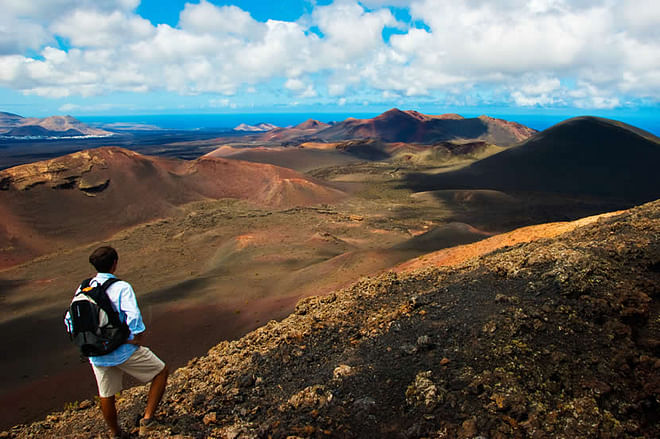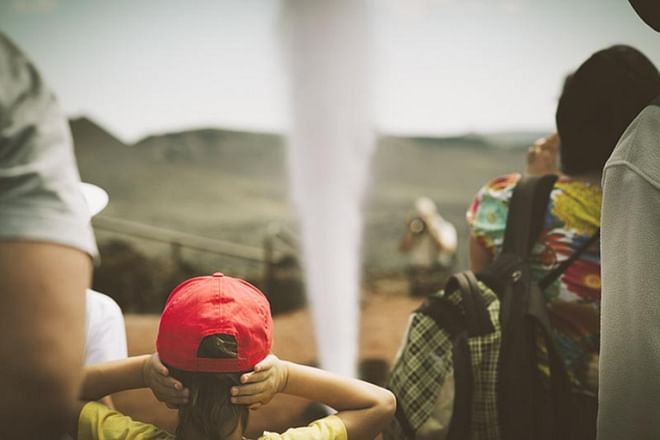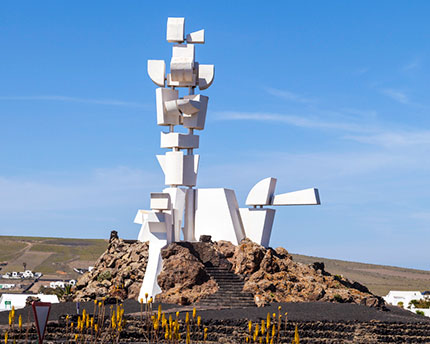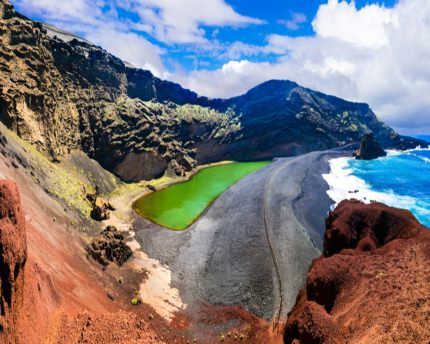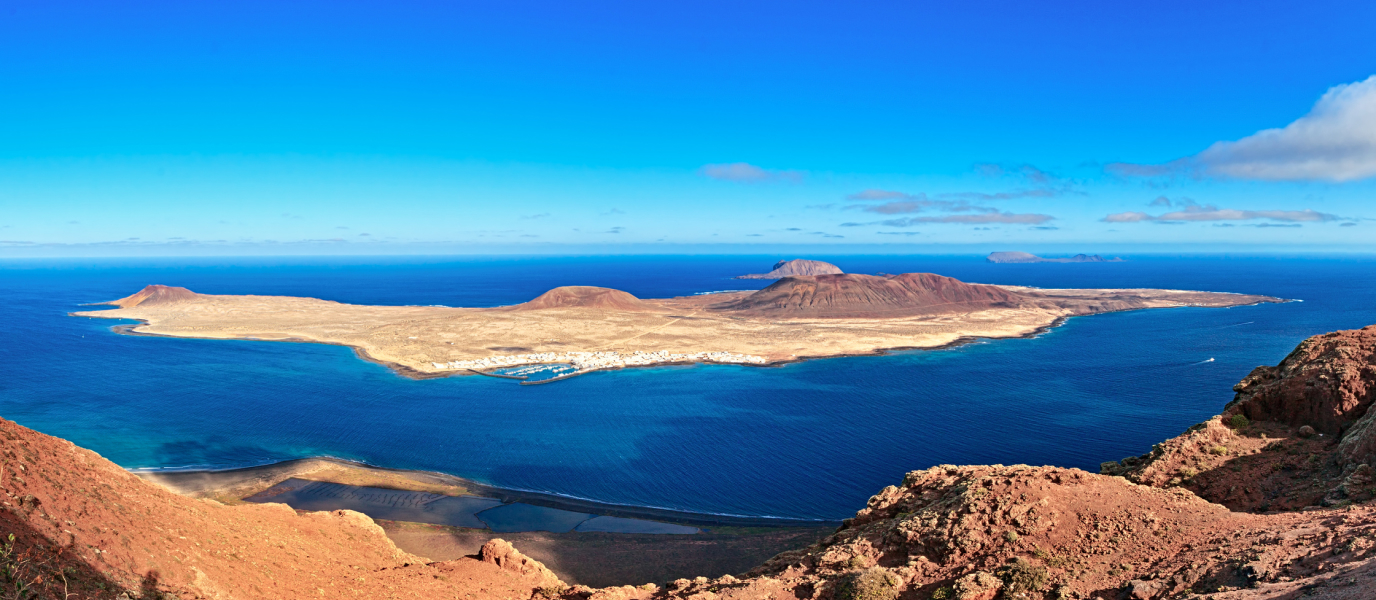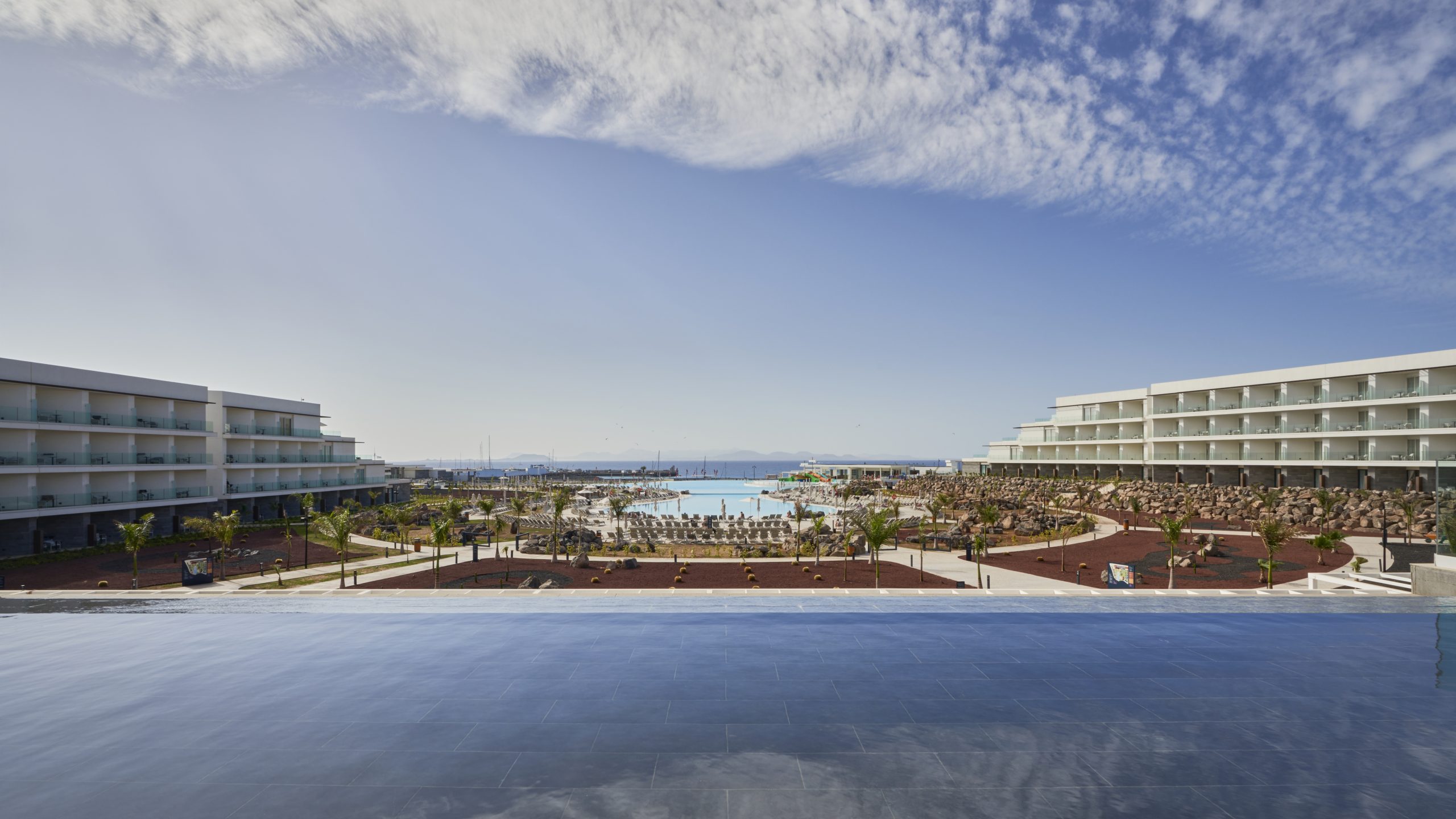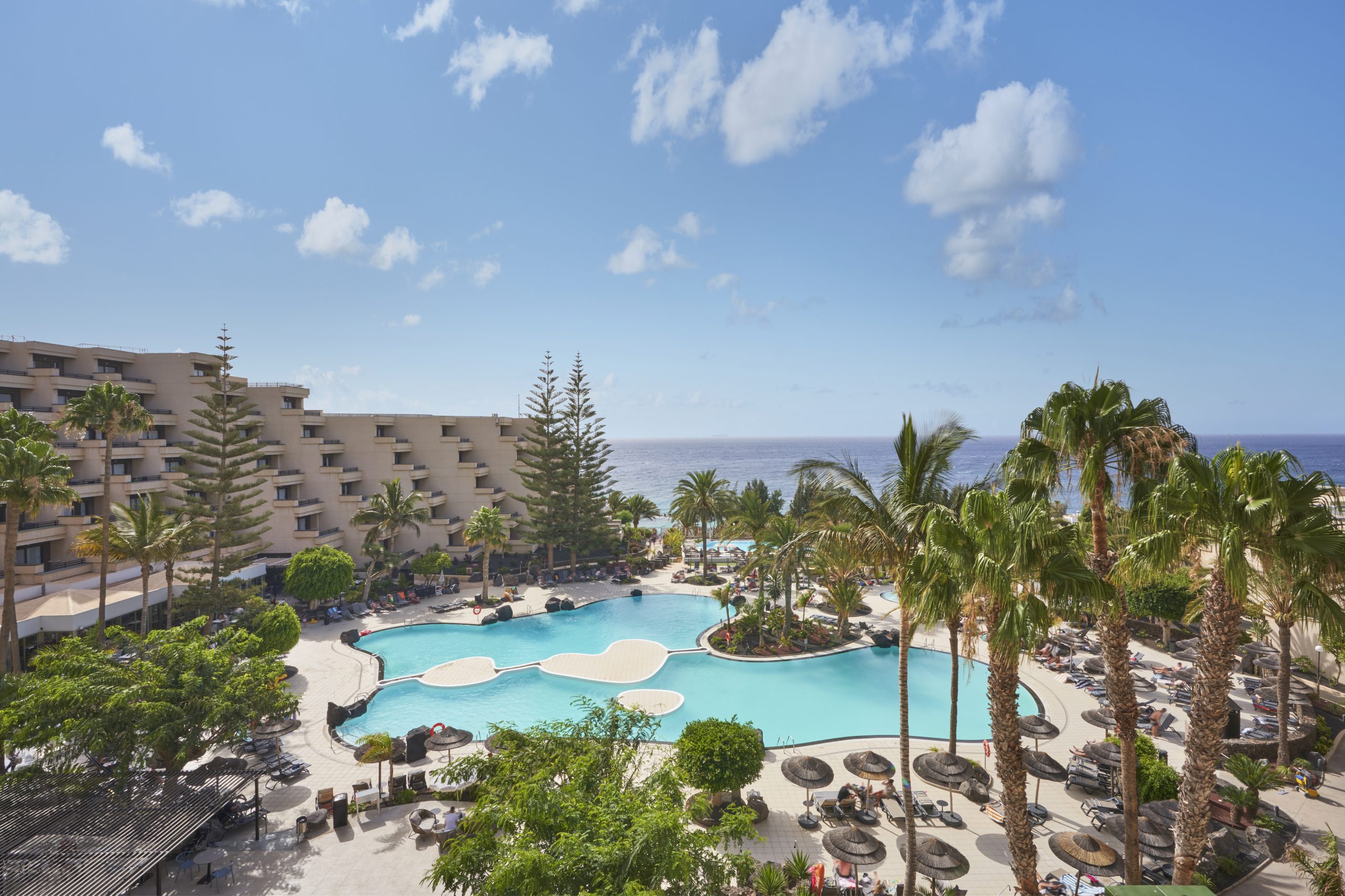Timanfaya National Park is synonymous with beauty, but also with bleakness: it is a place dominated by silence and emptiness. This type of landscape can have a disorientating effect, and brings to mind worlds beyond this planet—many people compare this area with the planet Mars. The absence of vegetation, the ruggedness of the terrain, the lava fields, the volcanoes and its colours, embracing a vast range of ochre and red shades, are the park’s characteristic features. The high temperatures of its surface remind us that below lies a magma chamber, a real heart of fire.
Timanfaya, also known as Lanzarote’s Montañas de Fuego [Mountains of Fire], owes its unique landscape to the volcanic activity that occurred between 1730 and 1736 (and subsequently, in 1824), when part of the island shuddered and was left covered in lava and glowing rock. Some of the island’s inhabitants, including the parish priest of Yaiza, made a written record of the events of those dreadful days. You will not be surprised to find a hermitage dedicated to the Virgin of the Volcanoes, which was erected as a gesture of thanks to the Virgin that the lava did not reach the nearby town of Tinajo.
Related experiences
Visit Timanfaya on foot, on a camel or by bus
Its early declaration in 1974 as a National Park (later extended to a declaration of over 90% of the land as a Reserve) has enabled the area to remain virtually untouched. These protective measures prevent the visitor freely accessing the whole of the park (an area of over 50 km2), but it does allow access to certain areas so that visitors can enjoy some of its incredible scenery. Although the absence of vegetation can be deceiving, there are many activities that may be undertaken on Timanfaya: including camel rides, hikes over otherworldly landscapes, and a visit to the Mancha Blanca Interpretation Centre to learn more about volcanology.
The ruta de los volcanes [volcano trail] is one of the easiest options to consider on a trip to Lanzarote, because it offers visitors the first steps in an exploration of the vast landscapes of Timanfaya—as well as the chance to take home indelible memories in the form of photos taken with a camera, or even with a mobile phone. To undertake this trail, visitors should make their way to a promontory called Islote Hilario, pay their admission fee and wait for the bus that will complete the programmed tour in 40 minutes. The route is strewn with volcanic tunnels, tephra deposits, cones and lava fields. If this offer does not appeal to you, and you want to feel the crunch of this gigantic chocolate cake beneath your feet, you can opt for the Ruta del Litoral [coastline] or for the Ruta de Termesana (a distance of only 2 kilometres).
Astride a dromedary
One of the most enjoyable ways to tour the Timanfaya Montañas de Fuego is astride a dromedary. (Although everyone calls them camels, they are not because they only have one hump). This experience, which is perfect for families with children, begins at the Echadero de Camellos, an area located close to the LZ-67 road (on the eastern edge of the park). The caravans of dromedaries depart from here every day, with each animal carrying two tourists, and make a 20-minute tour of the southern side of the breathtaking mountain Timanfaya (there is a charge for this activity).
Getting used to the swaying gait of the camels seems impossible at first, but is in fact quite easy. After a few minutes your attention will shift away from the camels (which have adapted so well to the desert-like conditions of Lanzarote) and onto your surroundings, a remarkably harmonious, rather than hostile, environment, with its sand and ash, seas of lava, slopes and cones exuding glowing colours. Either before or after the activity, visitors can find out more about the dromedaries or the tour itself in the Museo del Echadero.
A volcanic eruption and geysers on Lanzarote
There are certain phenomena that it is better not to experience in reality, and one of those is a volcanic eruption. Nevertheless, it can be interesting to see one in a controlled environment such as the Mancha Blanca Interpretation Centre. By means of a documentary, this modern facility provides visitors with a full account of Timanfaya National Park from its beginnings in the eighteenth century. The exhibition’s highlight is La Cueva, which we referred to above, which reproduces the experience of a volcanic eruption. To reach this Centre, follow the LZ-67 road and the centre is located only a few kilometres from Tinajo, just before you reach El Taro. The Centre is outside the park, and admission is free.
Don’t worry: like the volcanic eruption, the geysers are not entirely genuine, but the park staff do take advantage of the high temperatures in certain areas of the Islote de Hilario to create geysers and to demonstrate natural ovens. These are known as the Montañas de Fuego for a very good reason! The thermal anomalies in this area, where temperatures can reach 250 oC, are the greatest in the entire archipelago. After a hectic day of activity, you can relax in the restaurant situated on the highest part of the islet and which commands a panoramic view, enabling visitors to appreciate the vastness of the park. The restaurant’s oven even uses volcanic heat. This establishment was also designed by the local artist César Manrique, as was the metal devil that represents it.




























































